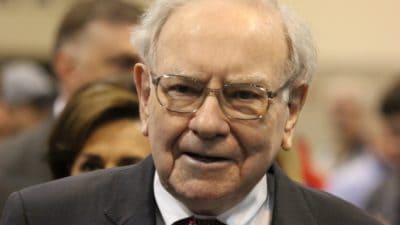Stocks and Shares ISAs currently have an annual limit of £20,000. That’s very generous – in most other countries people can’t invest anywhere near that amount on a tax-free basis.
Of course, being able to invest £20k in an ISA means the challenge is working out where and how to invest. Considering this, here’s how I’d personally invest the money today.
Please note that tax treatment depends on the individual circumstances of each client and may be subject to change in future. The content in this article is provided for information purposes only. It is not intended to be, neither does it constitute, any form of tax advice. Readers are responsible for carrying out their own due diligence and for obtaining professional advice before making any investment decisions.
Should you invest £1,000 in HSBC right now?
When investing expert Mark Rogers has a stock tip, it can pay to listen. After all, the flagship Motley Fool Share Advisor newsletter he has run for nearly a decade has provided thousands of paying members with top stock recommendations from the UK and US markets. And right now, Mark thinks there are 6 standout stocks that investors should consider buying. Want to see if HSBC made the list?
Investing for growth
Investing in stocks for long-term growth (eg for retirement) like I am, there are three main ways they can invest today. They can put their money into:
- Passive investment funds that track market indexes (also called ‘tracker funds’ or ‘index funds’)
- Active investment funds that are managed by professional fund managers
- Individual stocks like Apple, BP, and HSBC
Now, there’s a growing school of thought that most people should simply invest in passive funds these days. And I can see the logic here. These funds are simple, low cost, and efficient. And by taking a global approach, the returns can be excellent.
Take a look at the iShares Core MSCI World UCITS ETF (LSE: SWDA) for example. This is a low-cost, global tracker fund that provides exposure to about 1,400 companies.
For the 10-year period to the end of July, this product delivered a return of 9.6% a year (excluding trading fees and commissions and platform fees). That’s an excellent return over the long term. Especially when you consider how simple this fund is. With this product, investors could have obtained high returns without spending a lot of time on investment research or portfolio construction.
As for how it generated such good returns, a lot comes down to the fact that the top holdings (with the biggest weights) in global tracker funds these days are mega-cap technology companies.
I’m talking about companies such as Apple, Microsoft, and Alphabet (Google). These kinds of companies have been doing very well as the world becomes more digital. And their rising share prices have boosted global tracker funds.
Given the benefits of passive funds, I think these products have a place in a lot of investor portfolios today. With almost no effort, potentially attractive returns can be generated.
Aiming for higher returns
Tracker funds like the iShares Core MSCI World UCITS ETF aren’t perfect though. If we were to see a multi-year period where global stock market indexes didn’t rise much (this has happened in the past), these funds could deliver underwhelming returns.
This is where active funds and individual stocks come in. With these investments, one can add further diversification to their portfolios and improve their chances of generating long-term strong returns.
Active funds and stocks can also be used to capitalise on specific opportunities in an effort to beat the market. For example, if I wanted more portfolio exposure to artificial intelligence (AI), I could invest in an AI fund or buy shares in AI chip designer Nvidia (I’ve done both as I’m bullish on the theme).
My approach
So if I was investing my full £20,000 ISA allowance today, I’d include all three types of investments.
I’d have passive funds as core holdings. And then I’d have some active funds and individual stocks for diversification and extra growth.
This multi-pronged strategy should give me a good chance of generating market-beating returns over the long term.







